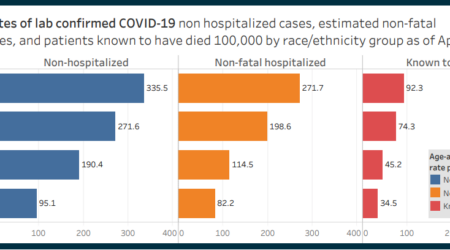 When Dan Lindheim was a freshman at UC Berkeley in the 60s, he was arrested in Sproul Hall for his participation in the Free Speech Movement. “We had a very negative view about police departments, particularly the Oakland Police and Alameda County Deputy Sheriffs,” he recalls.
When Dan Lindheim was a freshman at UC Berkeley in the 60s, he was arrested in Sproul Hall for his participation in the Free Speech Movement. “We had a very negative view about police departments, particularly the Oakland Police and Alameda County Deputy Sheriffs,” he recalls.
Years later, while in Argentina, he was badly beaten by the police. “They cracked my skull and rearranged my face, among other things,” he says.
In 2008, Lindheim was appointed by Mayor Ron Dellums to serve as the City Administrator for the City of Oakland. Part of his role was to implement a negotiated settlement agreement that called for a major reform of the Oakland Police Department, including reforms related to internal affairs, supervision of officers, police use of force, training, personnel practices, and community policing. “In my first talk to the assembled masses of Oakland officers, I started by saying, ‘I grew up in Berkeley, and we hated the Oakland cops’,” he recalls. “Then every time I met with the police union, and we were in constant meetings and negotiations, they would always start with how I hated the Oakland Police. It got to be sort of a joke.”
Today, Lindheim is an adjunct professor in the Goldman School of Public Policy, and Faculty Director of the Center on Civility & Democratic Engagement. He is also a member of a new Matrix Research Team, “Community Cooperation and the Police in Comparative Perspective,” focused on examining existing work on community relationships and the police in the United States and in developing countries. As part of their collaboration, the team aims to work directly with members of the Oakland Police Department. “Police are an important part of society,” Lindheim says. “In this community, the Oakland Police have been the source of a great deal of community concern and opposition. For a lot of us who grew up and have been active politically in this area, bringing about changes in the Oakland Police Department was something important and necessary.”
We interviewed Lindheim about the “defund the police” movement, changing police culture, and other topics. (Responses have been edited lightly for length and clarity.)
Your Matrix Research Team is very timely, given the recent calls for police reform and defunding. How did the team come together?
These are things that we’ve all been involved in and continue to do research in. We actually trained a cohort of Oakland Police in the fall at the Goldman School. Part of the issue is developing a certain level of confidence with officers, so you can talk frankly about issues. The general concern was to talk about developing a sense of police respect for the community, and community understanding and respect for police. In the absence of that, you have warring factions going against each other.
My particular interest is to specifically delineate the various meanings of “abolish” and “defund.” We have a pretty good sense of the range of important police reforms, but I think it’s less clear which current police functions could be more appropriately done outside of the police department. In my view, when people talk about “abolish,” they should be saying abolish certain police functions. No jurisdiction will be abolishing all police functions. It’s reallocating certain police functions to non-police officers and agencies. The police are often first responders on a range of mental illness issues. The police aren’t trained for that; and police don’t want to handle these issues. So there’s a certain level of general agreement that certain calls for service can be offloaded from police to other groups and agencies. But it’s not well defined what those things are, how alternative models would be developed, and what the process is for creating community involvement and buy-in for doing that. My main interest at the moment is trying to get community processes underway to really look at these issues of “abolish.” Defund is then just reallocating the budget from what had been to new arrangements based on changing those functions. It’s a critical issue of our time.
There’s general agreement that police are not the best trained to respond to all mental health issues. But it’s not obvious how you know when a 911 call is only a mental health issue. This is critical, because Dispatch needs to have clear rules for whether to dispatch an officer or a mental health specialist. You have to develop systems for figuring out, how do you do that triage? How do you do that allocation? And what if you have problems? Let’s assume that we have only social workers doing these responses. How do you protect them when things get dicey? These people are all city workers, whether they’re cops or non-cops. And if you’re the city manager or an elected, you’re responsible for the well-being of all of them.
One serious issue is that Dispatch is always underfunded and undertrained, and they have just an incredibly difficult job. But if we’re going to change from automatically sending everything to the police to sending it to some mix of police and to other people, there must be decision rules and training on these new rules. We must turn this from a political slogan to programmatic reality. Until this is done, you really can’t switch this on. And there must be community buy-in to any new model. Another abolish/defund issue is that the Oakland community is heterogeneous in all of its diverse communities. Surprising to some advocates, some people in Oakland want more police. Many in flatland communities and communities of color feel they’re generally over-policed and oppressed by police, but many also feel that they are not appropriately served when they have emergent situations. When faced with a violent situation, if they call the cops, they want to be sure that appropriate responders show up. So it’s very much a community-based issue for how you come up with these new rules of engagement, and who’s going to be assigned to do what.
We must turn this from a political slogan to programmatic reality. Until this is done, you really can’t switch this on.
What do you anticipate will be some of the challenges as cities try to “defund” the police?
The police are interested in keeping their current budgets, but just offload some of their current work to other people. From their point of view, this is a win-win: police can do less of the safety net social issues they don’t want to be working on and can then devote their efforts to addressing violent crime, which is what they really signed up to do. However, because of COVID, cities are in very precarious financial situations. They won’t be able to fund police at current levels while creating new systems for dealing with these safety-net issues. So it’s not going to be so simple.
Oakland has other challenges for reducing police spending. Oakland has a Measure Z parcel tax, which funds many violence prevention services that most everybody supports, as well as about 50 community policing officers. It has two provisions related to defunding. One, it says there must be at least 677 officers, period. At the moment, they’re at 741, so they still have a bit of room, but that provision means you can’t go below that level. So that’s a limitation. Two, it also says if police staffing is below 800 officers (which it is), then no officers can be laid off. So without layoffs, how do you reduce the force? You have to go back to the voters and change the parcel tax, or wait until 2024, when it is up for reauthorization. But that’s going to require time and its own community process. There is still attrition of about 60-70 officers per year, so the total number can come down, but just lopping off 50% of the officers isn’t happening any time soon. Minneapolis, which has said it will completely defund police, is similarly constrained in laying off officers; its charter requires its current level of 735 officers.
Most people are talking about 911 response when they’re talking about taking functions from police. But more than half of officers don’t work in 911. They’re not beat officers. They’re doing other kinds of jobs. They’re on special teams. They’re detectives. They’re in various different functional units. Part of the reimagining process has to look at that other half, because you have to see where the money is and see which of these functions can be reallocated to other agencies.
It is also important to understand that it is not just the number of officers, but how many beats and how many shifts are being funded. If police departments don’t have the requisite number of officers, frequently they just backfill the open slots with overtime. Part of the question is, how do you control that? One former chief told me, ‘if you give me a reasonable budget, then I’ll hold to that budget. But if you give me an unreasonable budget, to hell with it, I’m just going to do what I have to do.’ In my time in Oakland, we were able to control police spending and control overtime, but it took drastic effort, and it took major micromanaging on my part, and it required developing a relationship with the union and the leadership in a way that most city managers don’t have.
Most people are talking about 911 response when they’re talking about taking functions from police. But more than half of officers don’t work in 911.
How can police departments address a challenge like excessive use of improper force?
Excessive and inappropriate use of force is a serious issue. In my view, use of force policy is something that should be discussed and determined by the city’s elected representatives. Addressing use of force issues is difficult and something we worked very hard on. Officers need to understand that their role is not to mete out discipline to the people they consider to be bad guys. At most, the police role is to turn somebody over to the judicial process if they are suspected of some wrongdoing. But too many police feel that their role is cop, judge, and executioner. This mindset must be removed. A second aspect — and one of the things that I really fought against — is that when police are being disciplined or evaluated, especially on use of force, the department does what’s called a “final frame” analysis to determine whether the officer’s use of force is justified in the final frame, or very last second prior to the use of force. This makes no policy sense whatsoever. It’s quite possible that, in the final frame, the officer felt they were in jeopardy or imminent danger. But the real issue is, why did they put themselves in that position in the first place? To do a meaningful analysis and create appropriate policies, you have to back up a bunch of frames first and make sure that officers don’t put themselves in that final frame in the first place.
Too many police feel that their role is cop, judge, and executioner. This mindset must be removed.
Oakland has mostly banned car chases, except under very special and controlled circumstances, because generally nothing good happens with a car chase. Innocent people get injured, cars get destroyed, and people will wind up dead or severely injured. Police have an attitude of “we can’t let them get away.” The real question is, why not? Putting it in terms of a social cost-benefit, how important is it to always pursue somebody, and what are the costs of that?
Oakland has also stopped pursuing suspects into dark alleys. Again, nothing good happens in these chases. Officers are endangering themselves, and too often the result is an officer involved shooting. There was a police-involved shooting of somebody accused of something very minor. Officers pursued him down a dark alley, saw a shiny object, which turned out to be a marijuana scale for street sales, and the police brain said, “dark alley, shiny thing, must be a gun,” and they killed him. Now they have a procedure that they don’t chase people into dark alleys.
In the recent case in Georgia, the cop and [Rayshard Brooks], who ultimately wound up dead, were talking for over half an hour. And the officers had the guy’s car, they had his keys, they knew who he was, they knew where he lived. So he did something he wasn’t supposed to do. He grabbed the guy’s taser and ran. But it wasn’t like they had to do anything. They knew who we was! They could just wait a few minutes, drive around the corner, and arrest him. So trying to change that mental attitude — that you don’t have to use deadly force just to stop someone from running away — is a crucial aspect to all of this.
Another issue is that too many police self-select. Many senior officers say that when you hire inexperienced, young kids, give them a hot car and a weapon, plus you give them a certain amount of authority, it’s a recipe for bad things happening. And so, you really have to control it.
One of the things I learned in Oakland was that if you want cops to act differently, you have to order them to act differently. During the Oscar Grant demonstrations, I ordered them to act differently — not to use their tanks and not to come dressed in battle gear — no “hats and bats.” I said, you guys should be in solidarity with the demonstrators and demonstrating as well. What happened to Oscar Grant was reprehensible, and thank goodness it wasn’t an Oakland cop who did it. And you Oakland cops need to bond with the community. But it’s complicated., When people start throwing bottles at the police, then the question is, is it still okay to not have them using “hats and bats”? They are city employees who you are responsible for, so what seems reasonable becomes more complicated.
A lot of police are ex-military and see their role in that way. It’s a generalized problem across the country, not necessarily just the militarization in terms of the use of tools, which is a serious problem, but there’s this military attitude, and that has to change. You’re just not going to have decent, acceptable police community relations if you have that.
What is the value of having a high level of trust between the police and the community?
Police have very few tools to do any crime fighting or crime solving. If the community won’t give them information, and they can’t deal with the community or they don’t have trust, they have no ability to learn anything. Even when community members know who did what, there’s this whole attitude of, “don’t snitch”. Sometimes it’s because people are afraid, and sometimes it’s just that I people don’t want to be helping the cops. Unless you have some real relationship, it’s very hard for you even to do your job.
One of the issues in a lot of communities, and particularly in Oakland, is that flatland communities are most impacted by policing. Oakland is a very segregated city, and most policing takes place in communities of color, largely because there is a coincidence between where violent crimes are committed and these flatland areas. Most White folks live on the hill side of highway 580. There are almost no homicides and little violent crime and these areas don’t get much policing, much to their feelings of detriment. A few years ago, there was a move to actually hire neighborhood security guards because some of the hill communities felt like they didn’t have any officers.
When police believe that they have to stop people in order to prevent crime, and then wind up disproportionately stopping people of color, this has an impact on the whole community. Police need to understand these impacts. The fact that police mostly stop people of color, and primarily African Americans, is less a function of individual officer racism (which of course exists to some extent in Oakland and elsewhere) and more a function of where police do policing. What I tell my students, and the officers, is that the disproportionate stop numbers are the responsibility of senior policymakers who decide where police are assigned. If officers are assigned to areas that comprise predominantly people of color, the stops will largely be people of color. But that explanation doesn’t make it OK. Stopping people is oppressive to the people being stopped, especially if there isn’t a specific and justifiable reason for making the stop. Car stops, particularly unnecessary stops, harm community police relations. The best way for police to prevent or solve crimes is to have the respect and support of the community. It’s really an efficiency issue more than just a political issue.
When police believe that they have to stop people in order to prevent crime, and then wind up disproportionately stopping people of color, this has an impact on the whole community.
What kind of framework or process do you imagine will be needed to help guide efforts to defund the police?
Let’s take something like mental health. We could bring in various mental health experts and say, what kind of calls can you handle? And how would you know in advance whether you actually can handle them safely? Do you want to handle them with teams of mental health workers, or do you want to have joint teams of mental health workers and police? How do you configure that, and what do you need to know in advance so that a dispatch person can send the appropriate response?
It’s easy to say that mental health calls can be offloaded from police to social workers. But there are a lot of details. How do you pair people up? How do you allocate people? How do you dispatch? How do you protect people? And that’s just on the mental health calls. With domestic violence, there are other sets of issues. How do you determine which is the appropriate response and how do you protect your workers? It’s not so much coming up with an end allocation of who might do what, but how do you inform the debate? To the extent we can define these issues in a more precise and clear way, I think we could make a contribution to whoever we’re dealing with. This debate is just beginning. It is not going to just disappear. Moreover, it’s not something that can just happen in an instant. It’s not like you can just lop off X percent of your police force. You’ve got to come up with specific plans for how you want to deploy and organize, and how you train and how you staff, let alone how you finance it.
On the flip side, if you’re going to start having social workers replace cops, how are you going to deploy your cops? What do you want cops to do? In a place like Oakland, with a high number of violent crimes, what is the community feeling about what they want? They want the city to respond to violent crime and protect them. It may be more police, it may be different kinds of police. To me, one of the most important issues is that this can’t be a top-down kind of process. This has to be a genuine, community-developed process. Because without that, it’s just not going to be able to succeed.
It’s not like you can just lop off X percent of your police force. You’ve got to come up with specific plans for how you want to deploy and organize, and how you train and how you staff, let alone how you finance it.
If you were speaking to either a city administrator or a police chief, what advice would you have about how to approach this to achieve the desired outcomes?
What I’ve told one local chief is that you need to start looking at your calls for service, and trying to figure out in your own mind, which are the low hanging fruit that can and should be handled by non-sworn staff? And how would you know in advance that they’re the obvious ones?
The great advantage of the moment is that cops don’t want to be doing this stuff. It’s not like we have competing demands here. I don’t know that the social workers want to be doing it. (And I’m using social workers as a proxy word, it may or may not be a social worker.) From the police point of view, analyze your calls for service, analyze what your special teams are doing, and see which of these have to be officers and why. What are the gray areas, and how can you offer support? What happens if something goes bad? What’s the best way of staffing those types of calls?
The current police response is, we should have more social workers, but they should work in teams with our people, as opposed to our people getting training on dealing with mental health issues. For community folks, the question is, how do you define mental health calls and how do you want those handled? What kind of people should respond to which kinds of calls? And how do you protect these people if things go bad? It has to go from the sort of sloganeering, “off with your heads, and off with 50%,” into a reasoned discussion in which people can sit around a table and say, this is what I want here, this is not what I want.
I’m not presuming that people are going to agree. But at least you can refine these issues to a certain extent. To me, my real role is trying to educate a community process to make some kind of decisions and at least bring these issues closer to something people can discuss and either agree or disagree about, to come to some sense of what an alternative staffing model might look like, and what it might cost, and is it plausible?
Part of the reimagining is coming up with alternative models, and to the extent that we can help people, let’s just say reimagine alternative models, then that’s really where we have a substantial potential contribution. Otherwise, saying “cut 50%” works great as a slogan, but in the real world, that doesn’t help you a whole lot.
All of a sudden, this is a front-page issue. Once these protests happened, we said, this is an opportunity we can’t miss. We have to have some involvement with the department. This is the burning issue of the moment in this world of police, policing, and community. And I don’t think it’s going to be going away anytime soon. We have to spend whatever time we can to be helpful or useful and in providing whatever knowledge we may have to help the process.



